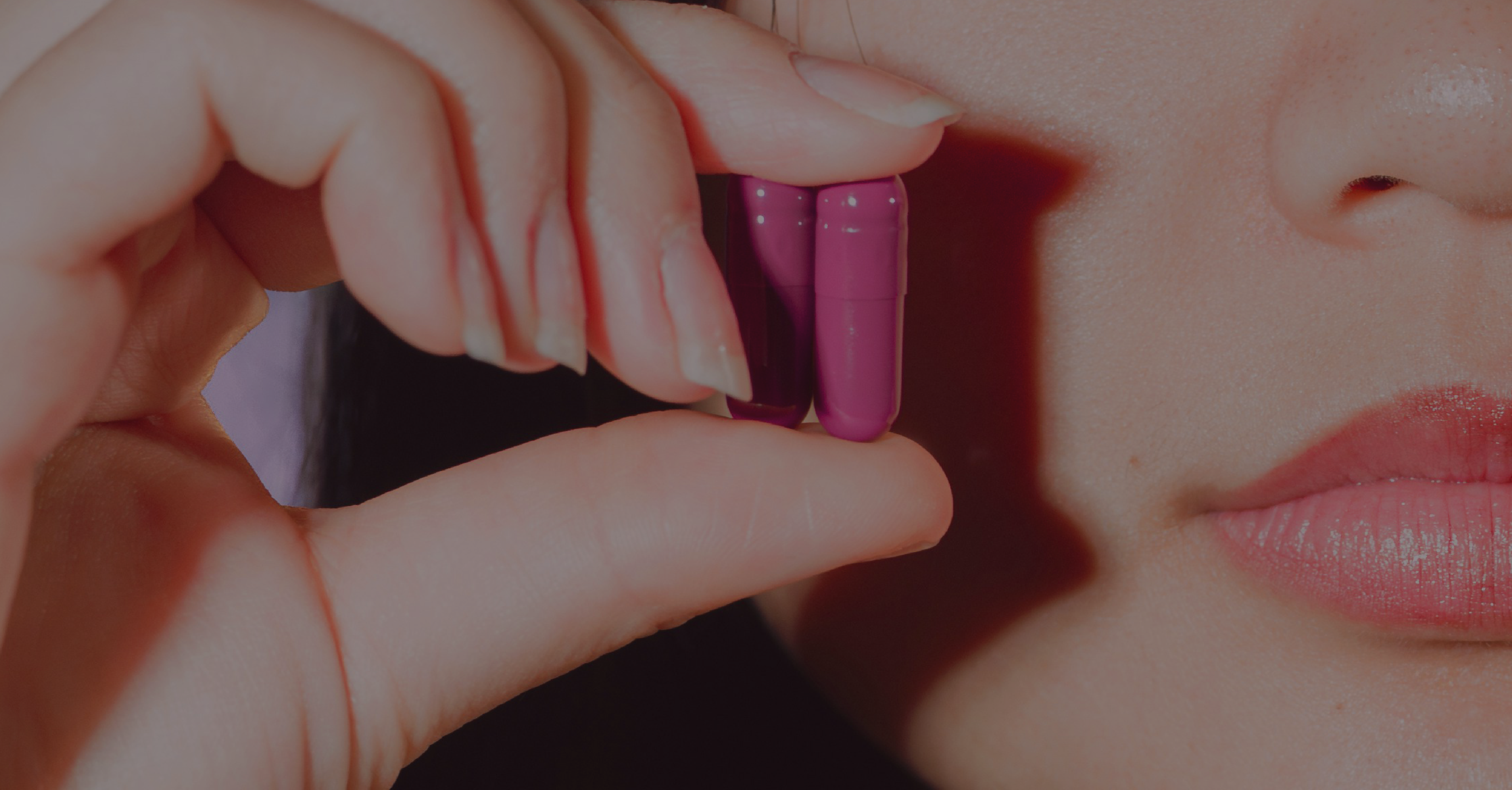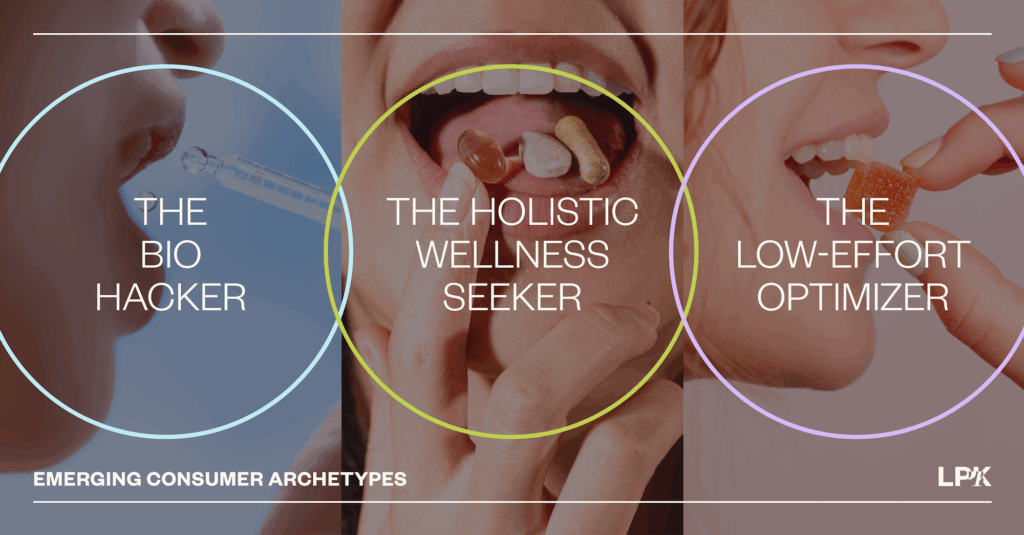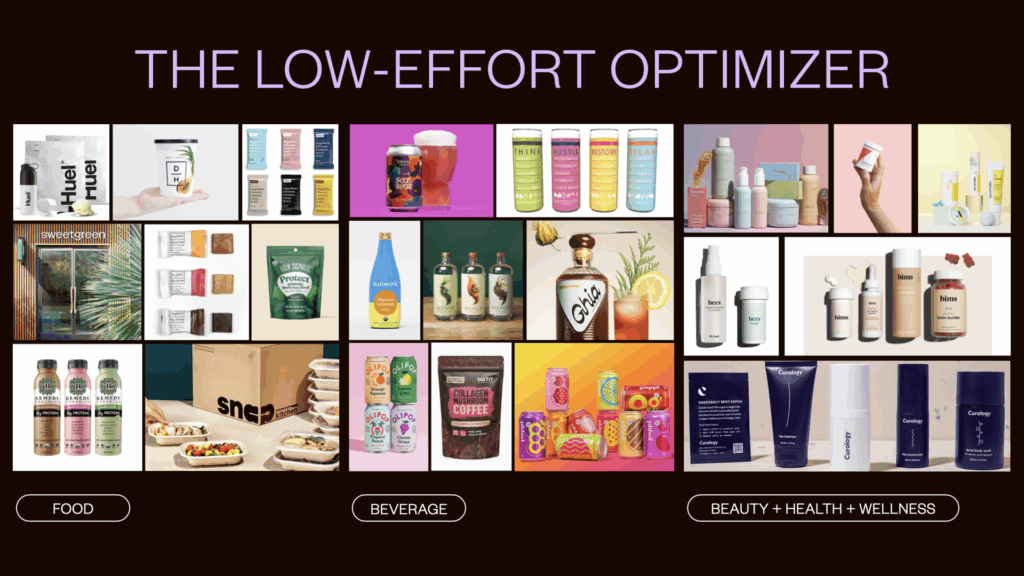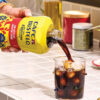GLP-1 medications like Ozempic and Wegovy are reshaping more than weight loss—they’re shifting the way people eat, shop, socialize and self-identify. These drugs are catalyzing a new cultural movement, not just a healthcare trend. And with over 9 million Americans having used a GLP-1 for weight loss, the ripple effects are being felt across categories—from grocery to beauty, beverages to supplements.
But this transformation isn’t just about consumption patterns. It’s about meaning—how consumers see themselves, and how brands reflect or reject that identity. Which is why packaging, brand design and semiotics matter more than ever.
A Cultural Shift in Control
GLP-1s aren’t just appetite suppressants. They’re part of a broader evolution in wellness, where consumers are taking their health into their own hands—and doing it on their own terms.
This shift is driven by frustration with a medical system that feels impersonal, inaccessible and out of step with modern needs. In contrast, GLP-1s offer something empowering: a sense of control. And consumers are building entire ecosystems around that control—from functional snacks and non-alcoholic drinks to collagen boosters and wearable health tech.
While many GLP-1 users are indeed patients, the uptake has expanded far beyond traditional medical contexts. Today, we’re seeing proactive, design-literate, wellness-driven consumers with distinct needs, behaviors and expectations. Understanding them starts with understanding these archetypes.
The New Wellness Consumer Archetypes
Based on LPK’s cultural scan, three distinct consumer archetypes are emerging—each defined by a unique blend of motivations, behaviors, values and attitudes that shape how they engage with wellness, and each carrying its own set of expectations for design, product functionality and brand storytelling.
The Bio Hacker
Data-driven and performance-obsessed, the Bio Hacker sees GLP-1s as one tool in a larger optimization stack. They want products that are:
- Precise: Portion control, macro balance and measured ingredients.
- Tech-forward: Designs that feel lab-born or clinically informed.
- Functional: Claims around metabolism, cognition and longevity.
- Preferred formats: RTD shakes, supplement systems and minimalist meal plans.
- Semiotics that resonate: Monochromes, bold sans-serifs, biomarker visuals and microdosing cues.
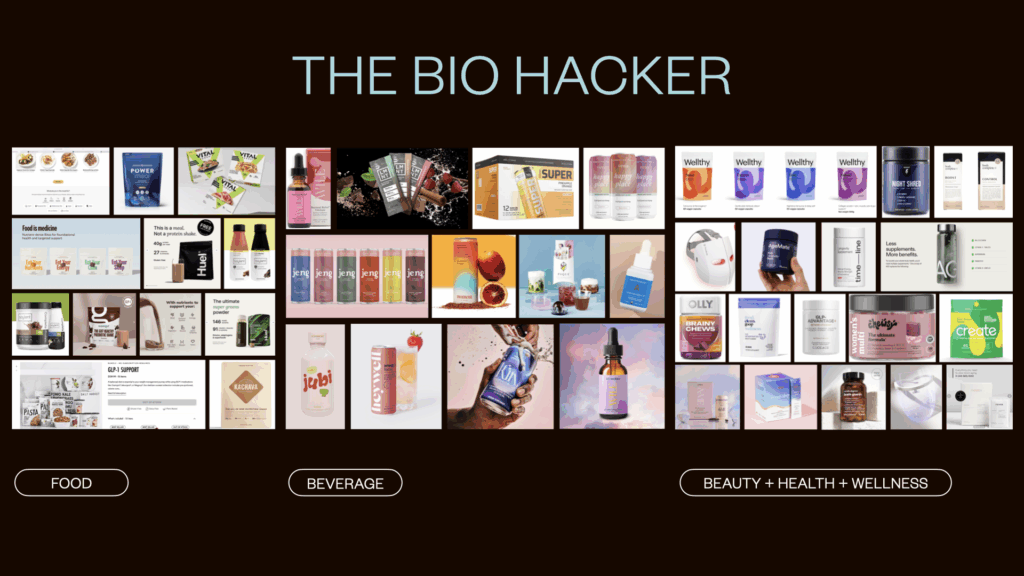
The Holistic Wellness Seeker
Rooted in nature and intuition, this archetype avoids synthetic pharmaceuticals and embraces plant-based, ancestral and emotionally supportive approaches.
- Natural: Ingredients like berberine, turmeric and adaptogens.
- Organic aesthetics: Neutral tones, hand-drawn illustrations and soft matte finishes.
- Trusted storytelling: Ritual-based use cases, hormonal support and mind-body balance.
- Preferred formats: Herbal tonics, functional snacks and tincture drops.
- Semiotics that resonate: Earthy textures, farm-to-body language, transparent packaging and small-batch codes.
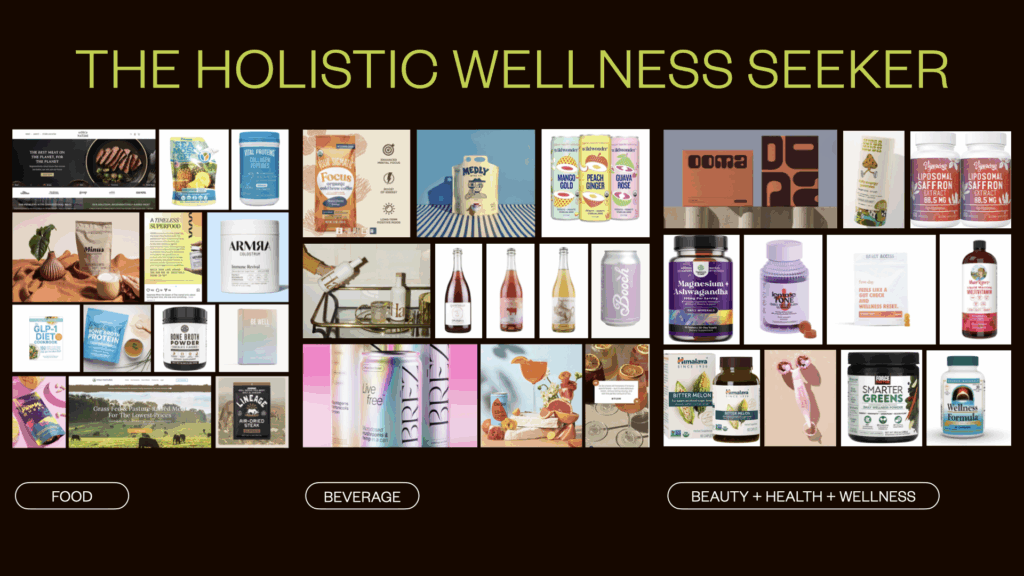
The Low-Effort Optimizer
They want results without the friction—no time for microdosing schedules or biofeedback trackers. This consumer values convenience, comfort and an approachable experience that fits seamlessly into everyday life.
- Streamlined: Subscription-ready, tap-to-buy, grab-and-go.
- Democratized wellness: Approachable language, clean but not intimidating.
- Functional beauty: Quick skincare, hydration hacks and hair retention kits.
- Preferred formats: RTD protein lattes, supplement gummies and lightweight rituals.
- Semiotics that resonate: Pastels, rounded edges, friendly tone of voice and lifestyle photography.
The Semiotics of Trust, Control and Belonging
As these archetypes grow more distinct, a one-size-fits-all design approach simply doesn’t work. Semiotics—the symbolic cues and codes that tell consumers what a brand stands for—must evolve in four key ways:
From Clinical to Collaborative
Consumers are rejecting top-down, expert-led healthcare design. They want brands that feel like partners, not prescribers. Packaging should reflect approachability, warmth and personalization—especially for GLP-1 companions that live on vanities, desks or gym bags.
From Aesthetics to Identity
These products don’t just serve a function—they symbolize a choice. That means packaging must look like something worth displaying and feel like something aligned with lifestyle, not treatment. Visual design becomes a tool for self-expression and belonging.
From Efficacy Claims to Emotional Signals
Yes, results matter—but increasingly, so do the emotional outcomes: confidence, consistency and care. Use cues like clean labeling, tactile finishes, transparent formulations and UX that supports ritual and routine.
From Containers to Companions
Smart brands are designing their products to be kept out, not tucked away. Companion products should be display-worthy, refillable, modular or even beautiful. Think less “pill bottle,” more “Apple of wellness.”
Implications for CPG: What Brands Must Do Now
While GLP-1s are reshaping how people eat and shop, we believe their most profound impact is emotional. These medications are dissolving long-held stigmas around weight and willpower, giving consumers permission to reframe their identity around health—not discipline. As joy in eating, social rituals and emotional grounding evolve, brands must consider more than just function. They must design for a new kind of fulfillment: one rooted in agency, calm and self-trust.
“We’re hearing from brand leaders who know this shift is bigger than a trend—but aren’t sure how to respond. It’s not just about product innovation anymore—it’s about rethinking how their brand shows up across every touchpoint, with more relevance and intention.” – Caroline Dunn, VP, Client Service at LPK
Here’s how forward-thinking CPG brands can respond:
Redesign products for function and flexibility. Support smaller portions, stronger nutrient density and simplified rituals. Make your formats trial-friendly, travel-ready and mix-and-match compatible.
Embrace semiotics that reflect empowerment. Audit your packaging. Are you signaling autonomy, or authority? Trust, or transformation? Reflect the consumer’s mindset, not the brand’s credentials.
Reposition around outcomes, not ingredients. Shift messaging toward lifestyle impact: energy, balance, routine, stability. Avoid hype or over-medicalization. Today’s consumer is fluent in wellness—respect their literacy.
Support the ecosystem, not just the moment. Consumers are curating stacks of companion products. Create experiences that plug into those ecosystems—whether it’s through co-branded bundles, refill programs or smart packaging systems.
The Bigger Opportunity
GLP-1 is not a trend. It’s a cultural unlock—a portal into the next era of wellness. One that’s more personal, more designed and more emotionally intelligent.
For CPG brands, this isn’t just a shift in demand. It’s a shift in meaning. If your packaging doesn’t speak the new language of self-care—of control, clarity and collaboration—you risk being left behind.
But if you listen closely, design carefully and meet consumers where they are (not where they were), you won’t just be relevant. You’ll be indispensable.
The images included in this article are used under the fair use doctrine for commentary, criticism, and educational purposes only. All rights to these images remain with their respective copyright holders.
ABOUT LPK
LPK applies insightful strategy and beautiful creativity to harness change—making momentum that grows brands and businesses.
